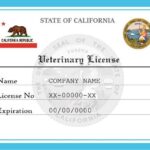Trademarks are essential assets for small businesses, offering legal protection for brands, logos, or slogans. A strong trademark ensures that no one else can use your business’s name or brand identity without your permission. This article will walk you through the process of how to register a trademark for your small business. Whether you’re a new entrepreneur or looking to grow your brand, understanding the basics of intellectual property law for beginners is crucial to safeguarding your business.
Key Takeaways
- Registering a trademark protects your business identity from misuse.
- The process involves conducting thorough research, filing an application, and working with the U.S. Patent and Trademark Office (USPTO).
- Trademark registration offers nationwide protection, ensuring exclusive rights across the U.S.
1. What is a Trademark and Why is it Important for Small Businesses?
A trademark is a legally recognized symbol, phrase, word, or design that identifies and distinguishes the source of goods or services of one party from others. It’s one of the most critical elements of your small business’s intellectual property. A trademark establishes brand recognition and helps protect your business identity, ensuring that your competitors cannot use your name, logo, or slogan.
For small businesses, building a recognizable brand is vital to long-term success. By registering a trademark, you legally protect your brand from infringement and counterfeiting, helping your business stand out in a crowded market. Failing to register your trademark could expose your business to potential disputes and costly legal battles if another company claims ownership of your brand.
2. Benefits of Registering a Trademark for Your Small Business
Registering a trademark offers numerous advantages, particularly for small businesses operating in competitive markets. These benefits include:
- Exclusive Rights: By registering a trademark, you gain exclusive nationwide rights to use your mark for the goods or services listed in your application.
- Brand Protection: Your registered trademark serves as public notice of your ownership, helping prevent others from using similar marks that could confuse consumers.
- Legal Recourse: In case of trademark infringement, registration allows you to sue infringers in federal court and claim damages.
- Asset Creation: Trademarks can appreciate in value as your business grows, making them valuable business assets that you can license, sell, or use as security.
Given these advantages, registering your trademark is a prudent investment in your business’s future.
3. Step-by-Step Guide on How to Register a Trademark for Your Small Business
The process to register a trademark for your small business involves several key steps:
Step 1: Conduct a Trademark Search
Before applying for a trademark, it’s essential to perform a comprehensive search to ensure no one else has already registered a similar mark. The USPTO’s Trademark Electronic Search System (TESS) is a useful tool for conducting this search. Searching can save you from potential legal conflicts down the road.
- Tips for an Effective Search:
- Search for exact matches as well as similar names, phrases, or designs.
- Consider phonetic variations, alternate spellings, and industry-related terms.
- Ensure your desired trademark is unique enough to be distinguishable from other registered marks.
Step 2: Determine Trademark Eligibility
To be eligible for registration, your trademark must be distinctive and used in commerce. The USPTO divides trademarks into four categories:
- Fanciful: Invented words (e.g., Google).
- Arbitrary: Common words used in an unrelated context (e.g., Apple for computers).
- Suggestive: Words that suggest a quality of the product (e.g., Jaguar for cars).
- Descriptive: Directly describe the product (may require proof of distinctiveness).
Fanciful, arbitrary, and suggestive trademarks are easier to register, while descriptive marks may face challenges unless they have acquired distinctiveness over time.
Step 3: File an Application with the USPTO
Once you’ve ensured that your trademark is available and eligible, you can proceed to file your application with the USPTO. The application process requires detailed information, including:
- The type of trademark (e.g., word mark, logo, or design).
- A clear description of the goods or services associated with the trademark.
- The date the trademark was first used in commerce.
Filing can be done online through the Trademark Electronic Application System (TEAS). The cost typically ranges from $250 to $350 per class of goods or services.

Step 4: Monitor the Application Process
After submission, your application will undergo an examination by a USPTO attorney. They may request additional information or reject your application if the trademark is too similar to an existing mark. If your application passes this initial review, it will be published in the Official Gazette for a 30-day opposition period. During this time, third parties can challenge your trademark if they believe it infringes on their rights.
Step 5: Receive Your Trademark Registration
If no opposition arises, or if any oppositions are resolved in your favor, your trademark will be registered, and you’ll receive a certificate of registration. Your trademark is now legally protected, and you can use the ® symbol to denote your ownership.
4. Common Mistakes to Avoid When Registering a Trademark
When registering a trademark for your small business, it’s important to avoid the following mistakes:
- Skipping the Trademark Search: Overlooking this crucial step can result in costly legal disputes if your desired mark is already in use.
- Choosing a Weak Mark: Descriptive trademarks can be difficult to register and defend. Opt for a stronger, more distinctive mark to ensure robust protection.
- Incorrect Filing: Inaccurate or incomplete filings can delay the process or lead to rejection.
- Not Monitoring Infringement: After registering your trademark, it’s up to you to monitor and enforce your rights. Failing to take action against infringers could weaken your mark’s legal standing.
5. How Long Does It Take to Register a Trademark?
The entire process to register a trademark for your small business can take anywhere from six months to a year. The timeline depends on factors such as:
- The complexity of your trademark.
- Whether there are any oppositions during the publication period.
- The responsiveness of the applicant in addressing USPTO inquiries.
Expedited processing is not available, so it’s wise to start the process as early as possible to ensure your brand is protected when you need it most.
6. Real-World Example: Starbucks and the Evolution of Trademark Protection
A well-known example of successful trademark protection is Starbucks, which has built a global brand by registering various trademarks for its name, logo, and even the green mermaid design. Starbucks regularly enforces its trademarks by filing lawsuits against infringers, such as counterfeit coffee products using similar branding. This has helped them maintain brand recognition and protect their intellectual property worldwide.
7. FAQs
1. Do I need a lawyer to register a trademark?
You don’t need a lawyer, but hiring one can simplify the process, especially if your application is complex or you’re unfamiliar with trademark law.
2. How much does it cost to register a trademark?
Filing fees range from $250 to $350 per class of goods or services, depending on the specifics of your application.
3. Can I register a trademark for my business name?
Yes, you can register your business name as a trademark if it meets the distinctiveness criteria and is used in commerce.
4. What’s the difference between a trademark and a copyright?
A trademark protects brand elements (e.g., names, logos), while copyright protects creative works like books, music, and artwork.
5. How long does trademark protection last?
A registered trademark lasts for 10 years but can be renewed indefinitely as long as it’s in use.
6. Can someone oppose my trademark registration?
Yes, during the 30-day opposition period, third parties can challenge your trademark if they believe it infringes on their rights.
Registering a trademark for your small business is a crucial step in protecting your brand and ensuring its long-term success. By understanding the process, avoiding common mistakes, and taking advantage of the legal protections a trademark offers, you can secure your business’s future in a competitive marketplace.
Read More: Intellectual Property Law for Beginners: Protecting Your Creations
External Link: For more details on trademark registration, visit the official USPTO website.










